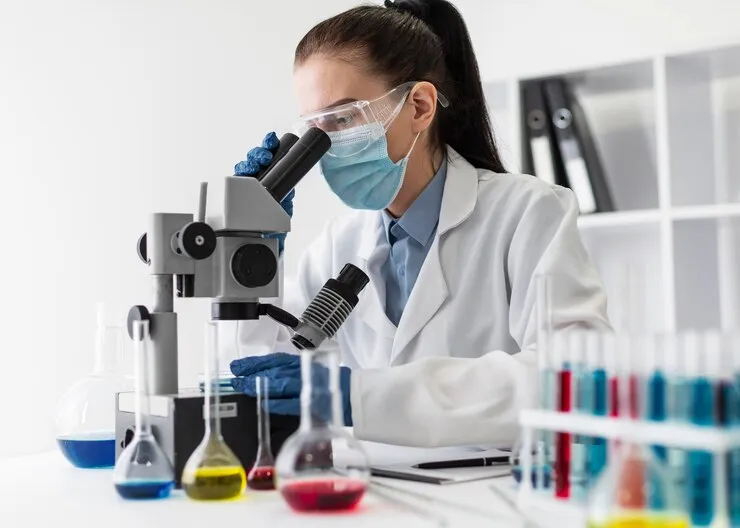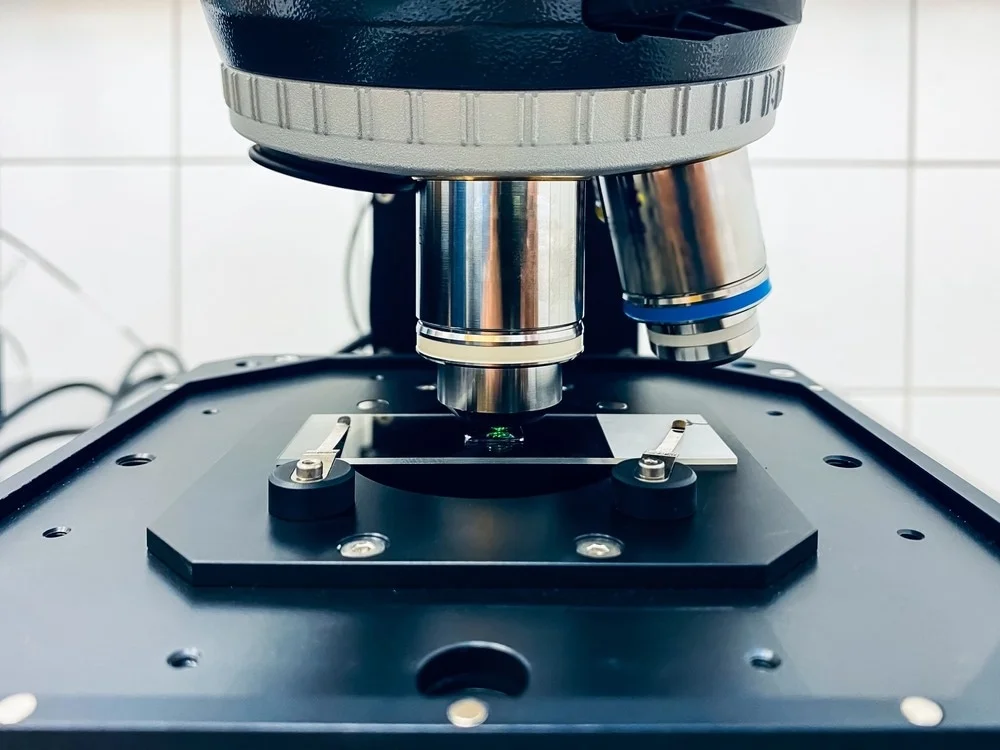Advanced Microscopy Techniques

Scanning Electron Microscopy (SEM)
Provides high-resolution imaging of surface morphology, texture, and microstructural features. Using a focused electron beam, SEM reveals nanoscale details with exceptional depth of field and contrast. Elemental mapping through Energy Dispersive X-ray Spectroscopy (EDS). Ideal for studying coatings, fractures, and micro-defects in polymers, metals, and composites.

Atomic Force Microscopy (AFM)
Captures ultra-high-resolution 3D topographical maps by measuring atomic-level interactions between a cantilever probe and the sample surface. AFM quantifies surface roughness, friction, stiffness, and elasticity, making it essential for nanomaterials, thin films, and biological samples that are difficult to analyze using electron microscopy.

Confocal Laser Scanning Microscopy (CLSM)
Uses point illumination and optical sectioning to create high-resolution 3D images of thick or heterogeneous materials. Confocal microscopy provides detailed visualization of biological tissues, polymers, and coated surfaces, enabling depth profiling and fluorescence overlay for structural interpretation.

Fluorescence Microscopy
Employs fluorescent dyes or markers to visualize and quantify biological or material-specific features. It enables selective imaging of cells, biofilms, and functionalized biomaterials, providing insight into viability, molecular localization, and chemical labeling in both static and dynamic systems.

Transmission Electron Microscopy (TEM)
Transmission Electron Microscopy (TEM) is an ultra-high-resolution imaging technique that uses a focused beam of electrons transmitted through an ultrathin specimen.
Microscopy lies at the core of our materials evaluation capabilities. We employ a range of imaging techniques to visualize surface morphology, internal microstructure, and nanoscale features with unmatched precision.
Techniques Include:
- Scanning Electron Microscopy (SEM):
Provides high-resolution imaging of surface morphology, texture, and microstructural features. Using a focused electron beam, SEM reveals nanoscale details with exceptional depth of field and enables elemental mapping through Energy Dispersive X-ray Spectroscopy (EDS). Ideal for studying coatings, fractures, and micro-defects in polymers, metals, and composites.
- Atomic Force Microscopy (AFM):
Captures ultra-high-resolution 3D topographical maps by measuring atomic-level interactions between a cantilever probe and the sample surface. AFM quantifies surface roughness, adhesion, stiffness, and elasticity, making it essential for nanomaterials, thin films, and biological samples that are difficult to analyze using electron microscopy.


- Confocal Laser Scanning Microscopy (CLSM):
Uses point illumination and optical sectioning to create high-resolution 3D images of thick or heterogeneous materials. Confocal microscopy provides detailed visualization of biological tissues, polymers, and coated surfaces, enabling depth profiling and fluorescence overlay for structural interpretation.
- Fluorescence Microscopy:
Employs fluorescent dyes or markers to visualize and quantify biological or material-specific features. It enables selective imaging of cells, biofilms, and functionalized biomaterials, providing insight into viability, molecular localization, and chemical labeling in both static and dynamic systems.
- Transmission Electron Microscopy (TEM):
Delivers atomic-scale imaging and crystallographic analysis by transmitting an electron beam through ultrathin specimens. TEM reveals internal structure, defects, and phase boundaries with unparalleled spatial resolution and supports electron diffraction studies for crystal orientation and lattice structure analysis.


